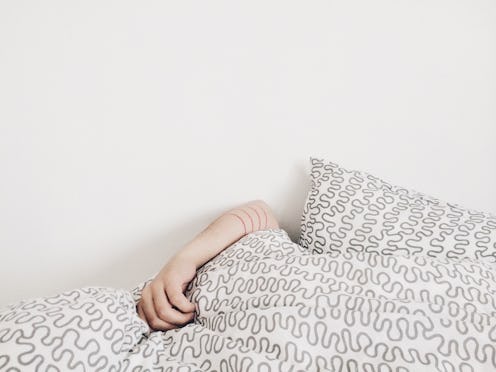Life
6 Surprising Ways Your Home Can Make You Sick

With so much new information becoming available to us, many people are now learning which habits can have an impact on our health. However, most of us probably aren't thinking twice about our habitat, but there are surprising ways your home could be making you sick. If you're constantly feeling lethargic or always feel like you have a stuffy nose, the culprit could be lingering in your house.
"Almost anything in the house could make a person ill, at least temporarily," says Bert Herring, MD to Bustle over email. "For someone with chronic symptoms of illness, it’s important to note whether they resolve when one is out of the house for some time. Allergic symptoms may fade as quickly as a few hours away from the house, but it may take days in another location to see symptoms change."
Anything from chemical irritants, allergens, and bacteria present in your house can cause symptoms ranging from mild irritation to respiratory problems, so it's important you clear your house of any issues if you suspect you have a problem. If you've been experiencing some chronic symptoms that you can't quite pinpoint, consider these six surprising ways your home could be making you sick.
1. Your Shower
If your shower curtain liner has those little black spots on them, you may want to toss it or throw it in the wash. This type of black mold can cause respiratory issues as well as create allergy symptoms such as a runny nose, watery eyes, and coughing.
2. Air Conditioning
"Condensation in air conditioning systems or in ventilation ducts, including cars, can create a home for irritating mold and illness-inducing bacteria to grow," says Herring. This growth can cause respiratory issues such as asthma, allergies, coughing, and headaches.
3. Pillows
There's a reason why you need to wash your pillows and pillow cases so frequently: Bugs, dead skin, dust mites, and feces can all linger within them. This can cause a variety of sicknesses from the flu to skin infections.
4. Candles Or Air Fresheners
Candles and air fresheners in the home may smell nice, but they could be an irritant, creating allergy-like symptoms such as runny nose. Studies from the Journal of Environmental Health found that 19 percent of the population have experienced adverse reactions to air fresheners.
5. New Floors
"Chemical irritants are more likely in new or recently remodeled homes, and may come from flooring (wood or carpet) or paint," says Herring. "If something has a noticeable odor, that means it’s releasing chemical vapors that could act as irritants or allergens."
6. Dish Towels
Most of us probably don't wash our kitchen towels weekly as recommended, which means they could be harboring mold, germs, and even food-borne illnesses. According to a study from Kansas State University, hand towels are the most contaminated hazard in the kitchen.
Even if your house isn't clean 24/7, that doesn't mean you are necessarily making yourself sick. "The main issue is whether there is moisture continuously present in any location that allows mold and bacteria to grow," says Herring.
Images: Pixabay (7); elizabethlies/Unsplash